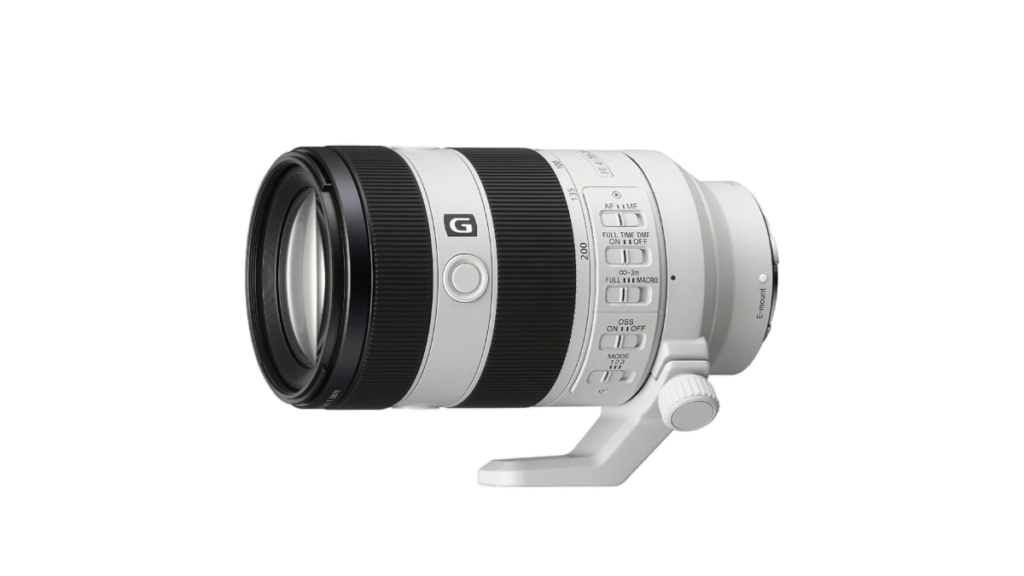LensTip reviewed the Sony FE 70-200mm F/4 Macro G OSS II in depth. This is just a summary of their findings, please visit LensTip for all the details. All in all, the Sony FE 70-200 is a slid lens. It is weather resistant, lightweight and has excellent image quality in the center, decent image quality in the corners, low axial chromatic aberration, no noticeable lateral chromatic aberration at 135-200mm, very well corrected coma , low astigmatism, quiet, lightning-fast high-precision AF, and highly effective image stabilization. However, it has weak backlight resistance, conspicuous peripheral light falloff at full size, large distortion, conspicuous lateral chromatic aberration at the wide-angle end, high price.
Key Observations
- The zoom ring moves smoothly, evenly and rotates about 90 degrees for quick zooming, extending the length by 56mm when fully extended.
- The electronic focus ring operates smoothly and precise. The rotation angle from minimum to infinity is about 180 degrees, but this varies slightly depending on the focal length and speed of rotation.
- The minimum focus distance is 0.26m at 70mm and 0.42m at 200mm.
- The camera shake correction is nominally effective for 4 steps.
- Central resolving power is uniform across the entire focal range. When stopped down, the value is slightly lower.
- Resolution in the corners is best at well over 50 mm wide open.
- Sharpness in the centre is very good, but does trail off towards the edges, but considered acceptable over all.
- Axial chromatic aberration is not a problem at all.
- Lateral chromatic aberration is best in the mid-zoom range and very low. There is a little more chromatic aberration at 200mm, but it's on the borderline between very low to low. At 70mm, stopping down the aperture increases the chromatic aberration to a high level. For medium zoom ratio telephotos, such characteristics leave a bad impression.
- Spherical aberration is not perfectly corrected, but no focus shift is visible.
- Distortion is surprised, but auto-correction can't be disabled. Distortion is close to zero across the zoom range in JPEG. 1.41% pincushion at 70mm and +2.89% pincushion at 200mm in RAW.
- Astigmatism is 4.4 percent.
- Vignetting is noticeable and cannot be completely eliminated even by stopping down two stops.
- Peripheral light falloff is well corrected in JPEG, but in RAW it is 47% (-1.86EV) at 70mm open, 34% (-1.18EV) at 135mm open, and 47% (-1.84EV) at 200mm open. become.
- Autofocus is silent and very fast.
- Focus breathing is a common.
The FE70-200mm F4 Macro G OSS II has improved optical performance over its predecessor while being smaller, and is capable of full-fledged macro photography with a magnification of 0.5x, making it a very attractive lens. Bokeh isn't rated very highly here, but it feels pretty good in live-action images.
It seems that distortion and light falloff at edges depend on electronic correction, but this seems to be a trade-off with miniaturization, so it can't be helped. As for the backlight resistance, it may be a place where I want you to do a little more because it is the latest lens.

